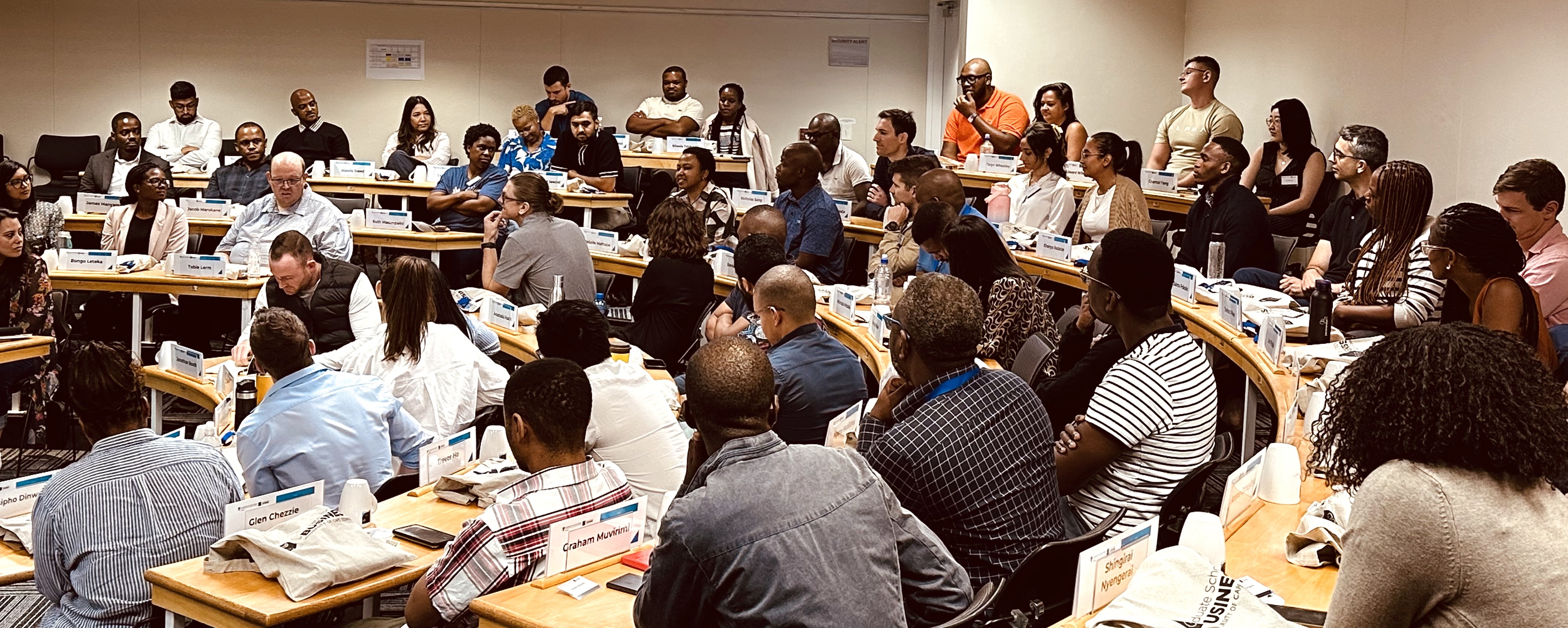
At the CWC, we spend our days working with case researchers and writers to get new African business cases into business school classrooms where expert teachers bring these vital teaching tools to life with their students. On 5 February, The Case Centre – one of the premier global case publishers and a valued partner of the CWC – is celebrating the case learning experience with World Case Teaching Day. At the GSB, we have a faculty that is passionate about teaching cases in new and exciting ways that marry the best parts of the traditional case method with fresh and relevant approaches. To celebrate WCTD, we have rounded up words of wisdom from some of the GSB’s top case teachers. Read on to learn how they use cases in the classroom and their favourite case of the moment.
Giving students variety
“I think stories are an integral part of learning. From the early days of mankind, stories were the way in which information, cultural values and knowledge were transferred between generations and I believe it still appeals to many.
When choosing a set of cases to teach on a course, I try to choose cases set in a variety of contexts but also a variety of industries.
I often use stories as examples as well to make the theory more palatable and practical in terms of application. The cases are a way for students to apply the theory they have learnt in order to practice making decisions in a safe and risk free environment, and to learn to put themselves in someone else’s shoes with imperfect information.”
Associate Professor Mignon Reyneke, Marketing
Favourite case: “TanTan: Love at Right Swipe”
Encouraging diverse perspectives
“During the facilitated class discussion, I encourage the students to share their insights but also be open to critique and competing views. I tend to hold back answers and ask open-ended questions, and let the students range in their perspectives and ideas. The idea is to let them really think about many internal and external factors impacting the company or person in the case. I also encourage them to draw from as many academic disciplines as possible. They are encouraged to think creatively and consider multiple alternatives – sometimes communicating these ideas in class from their seat, and sometimes I get them to present as a group, in front of the class. For presentations, I let them prepare a few slides and a two-page brief. In the end, depending on what I am trying to achieve with a particular case, I may share my insights and perspectives as a kind of debrief. At other times, I will finish a session without actually sharing my own views.”
Professor Kurt April, Leadership, Diversity & Inclusion
Favourite cases: “The South African Broadcasting Corporation (SABC): Powerless but accountable leadership for former GCEO” and “The road less travelled: A Zimbabwean leadership dilemma”
Making it real
“I normally use cases as part of a broader pedagogical idea where the case is facilitating decision-making learning. It allows me to provide situations that are based on real events and it gives the students an opportunity to apply and develop capacity and knowledge in entrepreneurial decision making.
For instance, we introduced a new case to a small MBA class. It was a live case about a social enterprise called Umoya, and one of the founders was in the session. An interesting challenge was presented of a scale-up trying to evolve from a non-profit to something else. The energy in the room, the inspiration from the founder and the learning was amazing.”
Professor Mikael Samuelsson, Entrepreneurship and Strategy
Favourite case: “Medical Cannabis: Afriplex’s diversification and integration strategy in an undefined market”










